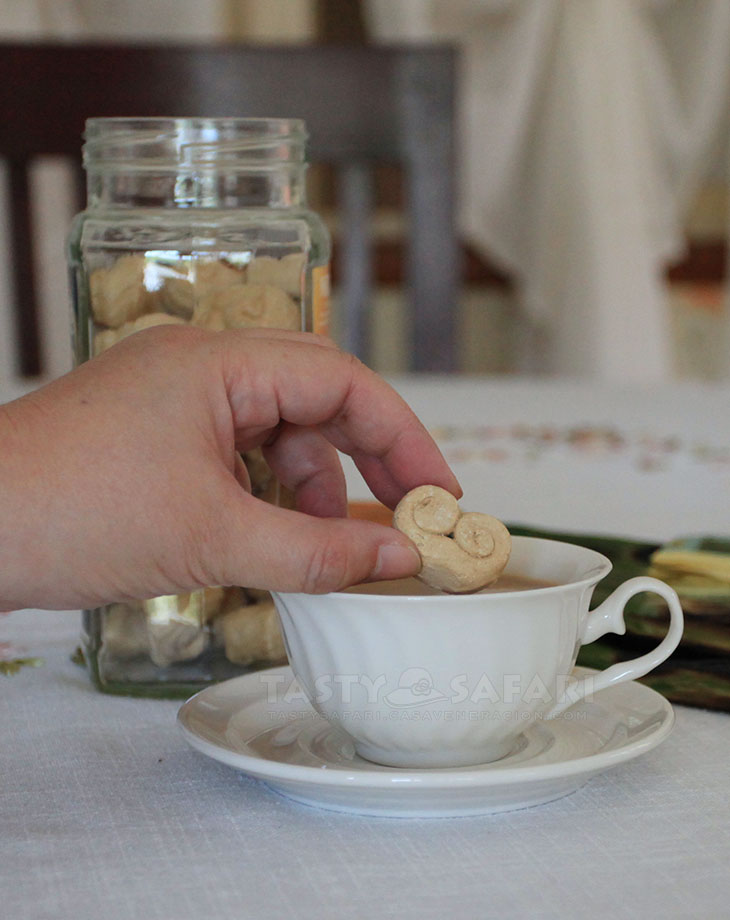Whenever we discover a gustatory delight when traveling, we tend to buy the item in bulk to be able to enjoy it for a long time at home. Such was the case with balicucha, the coffee sweetener in Vigan. How we discovered it is a funny story.

We were having breakfast at our hotel in Vigan, coffee was served and, on the saucer was what I first thought to be a cookie. You know, like those tiny almond cookies that they serve at Dome Cafe? I searched for the sugar bowl, found none on the table, so I hailed a passing waiter and asked for sugar. A few seconds later, he came back with packets of artificial sweetener. I thought he misunderstood. I wanted natural sugar, brown if they had it, not artificial sweetener.
I was about to call him again when I noticed the little thing on my coffee saucer and realized it wasn’t a cookie. I looked at it closer, noticed how much like tira-tira (native sugar candy) it felt in my hand so I decided to conduct the most logical test — taste it. I took a small bite, it did taste like tira-tira but it was not chewy but porous. Feeling bold, I dropped it into my cup of hot coffee. I stirred the coffee and realized that the sweet thing I dropped in it had melted.
I sipped my coffee, liked how it tasted, Speedy did as I did then we asked a waitress what it was that we had just put into our coffee. Balicucha, she said, and it is only found in Vigan. She didn’t know what it was exactly but she offered the information that it was sold at the hotel and also in shops around the city. After breakfast, we walked to Calle Crisologo for some last minute shopping, found balicucha in a number of stores, bought a large packet and brought it home.
Much later, as I tried to find more information about balicucha, I read that there is a dance called balikucha (please note the difference in spelling) and a song entitled Pastilan where balikucha is mentioned.
I also discovered that there is a candy called balikucha which, according to a web page that has gone cold, is a “chewy caramel confection in stick form. A dental disaster, sticky and highly elastic when put in the hands of elementary school children. Every mom’s laundry nightmare. Grains of sand in the candy is assurance of quality.”
Clearly, there is balicucha and it is not the same sa balikucha. The waitress at the hotel might just be right when she said that balicucha is unique to Vigan.